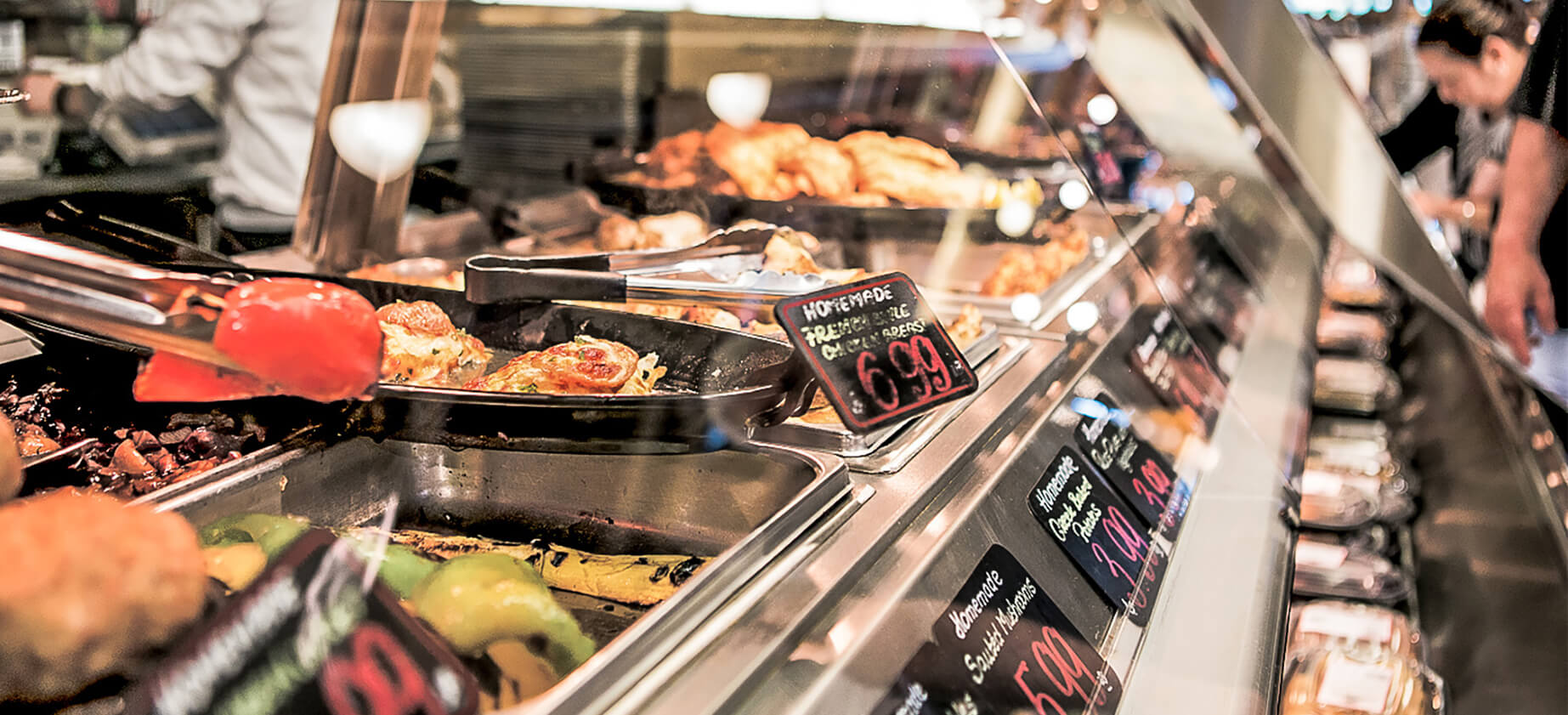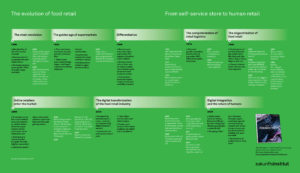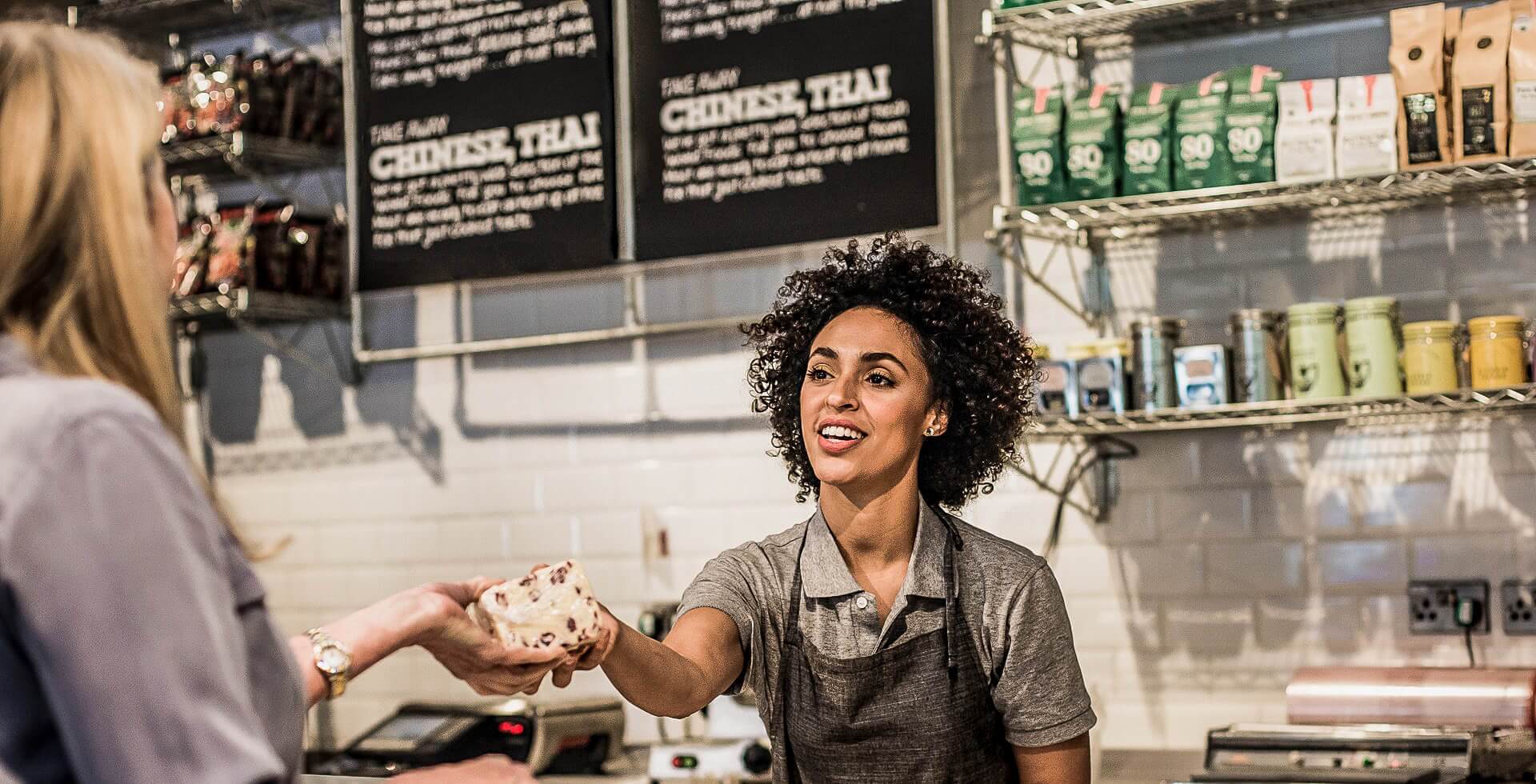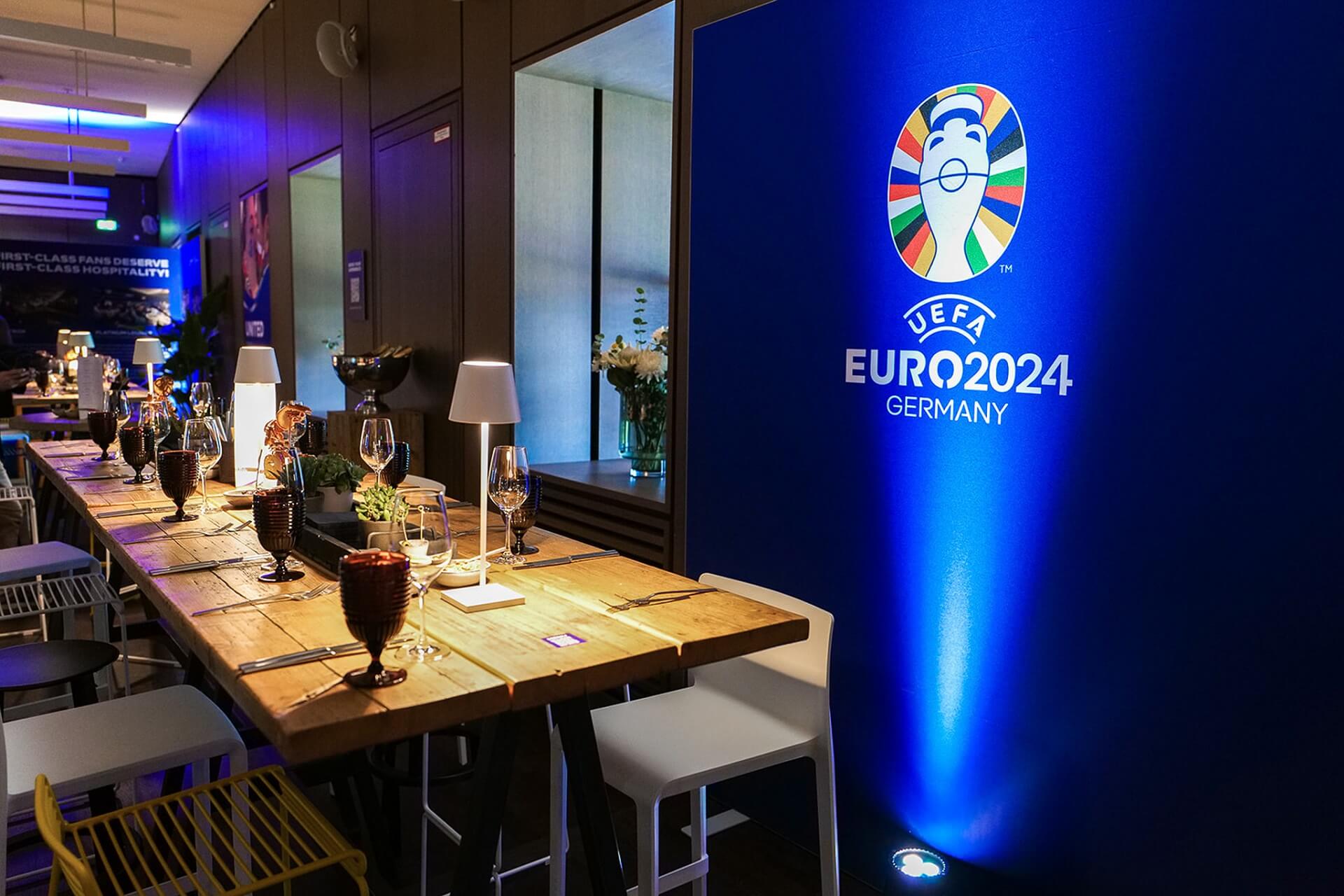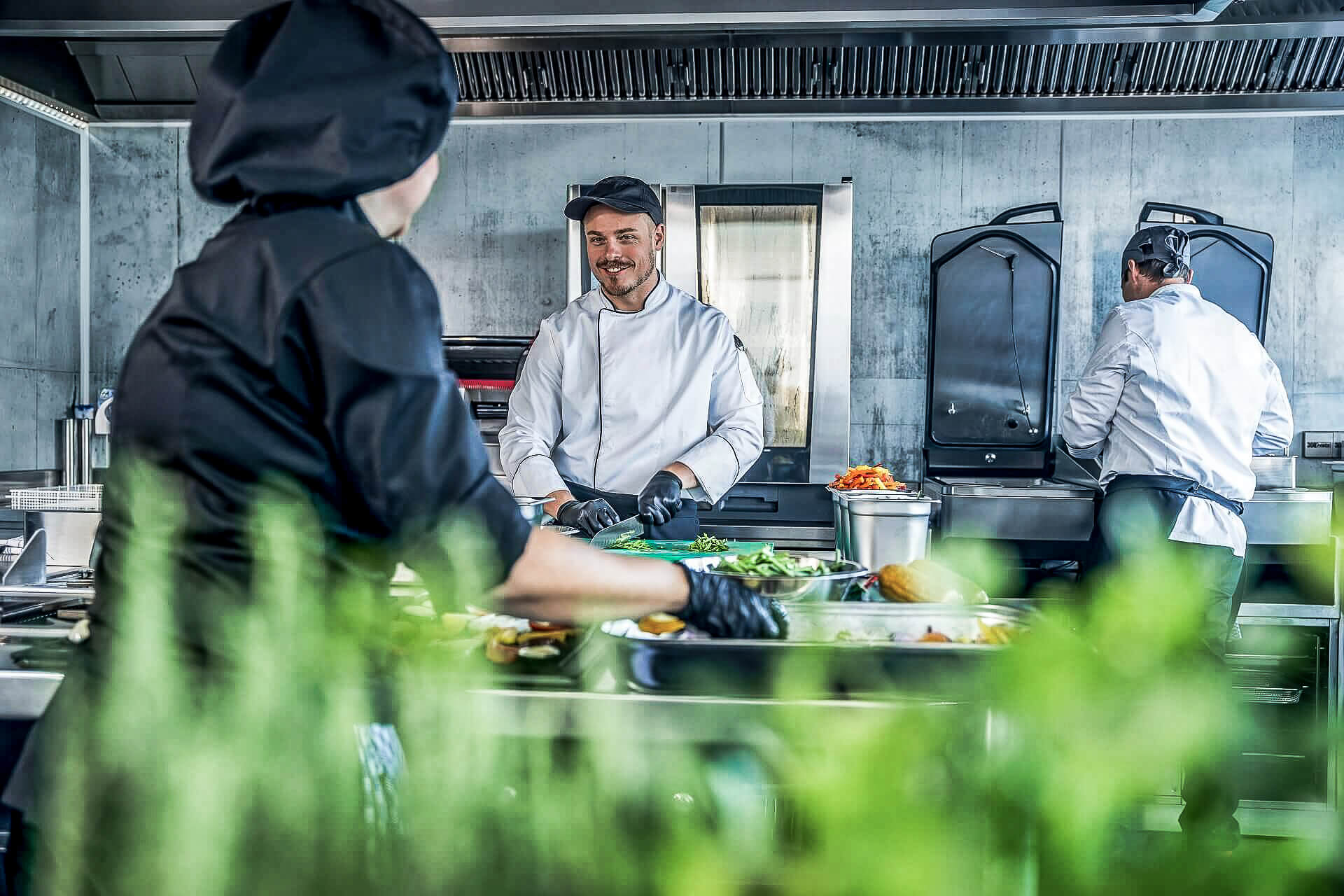We live in an age of simultaneity, of constant availability and asynchronous lifestyles where an increasingly wide range of roles is slowly eliminating familiar routines and predictable day-to-day behavior. This is affecting how we eat as well as how we buy food – we’re doing both more spontaneously, more situationally, and less frequently.
The big-box stores on the outskirts of many towns in the US, France, and Great Britain are steadily losing customers; Europe’s largest retailer, Carrefour, announced in early 2018 that it would be closing several of its hypermarkets and investing more heavily in online retail.
Meanwhile, 2017 marked the first year where US consumers spent more on food outside the home than they did on groceries and drinks for at-home consumption (source: United States Census Bureau).
Smart grocers are offering more exciting and diverse dining options that cater to consumers desires for interesting foods and 24/7 convenience.
Supermarkets plus convenient dining experiences
“Grocerant,” as you might have guessed, is a portmanteau of “grocery” and “restaurant”, a logical progression from the convenience products that changed supermarkets just a few years ago.
This fusion of food retail and food service takes the idea to the next level through fully equipped dining areas, table-side service and in-store chefs; many places offer a range of high-quality hot and cold dining options, prepared fresh to order.
These food service areas are different from mall food courts or IKEA-style canteens in that they’re integrated right into the shopping area. The idea is that customers decide to enjoy “in-store dining” either before or after doing their grocery shopping, and connect that experience both physically and mentally with the supermarket itself – thereby strengthening their loyalty to the chain.
Asia leads the way
Lotte Mart, an Asian hypermarket chain, is well ahead of the game when it comes to giving consumers a good “grocerant” experience.
Their concept store in Seocho, South Korea, features several kitchen islands where shoppers can order a variety of freshly prepared food. At the steak station, they can pick out their favorite piece of meat and have it prepared right in front of them, along with grilled asparagus and fresh tomatoes if they so desire. The seafood station features a wide variety of high-quality options; here, too, customers can pick out their own scallops, shrimp, salmon, or lobster. A salad station and a juice station round out the meal. On average, around 8,300 shoppers come to the hypermarket every day – double the number that come to Korea’s other 120 Lotte Marts.
Seamless connections between real and digital
Hou Yi, CEO of Freshippo (an Ali Baba-owned supermarket chain) describes the supermarket of the future as “an experience center with dining options and a logistics center.” Structurally speaking, that includes ensuring a seamless connection between the offline and online worlds.
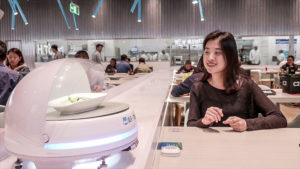
Robot.He / Image: Alibaba Group
At Robot.He, Freshippo’s grocerant in Shanghai, customers can use the Freshippo or Taobao apps to select from a digital food-service menu. Small robots carry the food down the bar running alongside the tables and deliver it to customers. Of course, the app also provides comprehensive information on the dishes themselves, including nutrients, ingredients, calories, and origins of the individual ingredients. Customers can pick out certain ingredients from the supermarket (fresh fish, for example), which are then sent to the kitchen for preparation via conveyor belt. They pay for the whole thing digitally when they check out.
Supermarkets are in the process of losing their traditional function; in the future, they’ll emphasize experiential value and social interaction over mere grocery shopping. They’re turning into service providers, expanding their portfolios to include fresh, hot meals as well as in-store cooking courses or wine tastings. In other words, the supermarket of the future will be all about the experience.
If you want to find out more about how high-quality foodservice drives profitability then download our free whitepaper for c-store (pdf) and supermarket (pdf) today!


